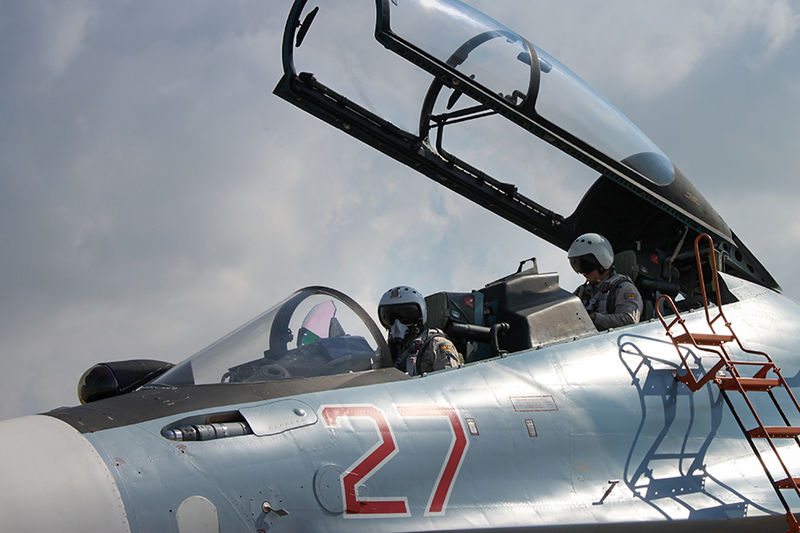
Russian military aircraft at Latakia, Syria
When Russian President Vladimir Putin got serious about modernizing his military in 2013, he lacked something: somewhere to flex those new muscles.
Russia Says It’s Ready To Talk About INF Treaty
It’s a “chicken or the egg” paradox. Does a country really have military power if it doesn’t use it? Or does the process of employing the country’s military create that power?
The leaders of the world’s most bellicose nations don’t feel secure until they’ve seen their troops in combat, no matter how well manned, equipped, and trained they are. Supreme CINCs like to see the effect using their military power has on others.
The Kremlin watched while U.S. and NATO forces were used in many places around the globe in the 1990s and 2000s. There were some senior Russian officers who’d done a tour in Afghanistan during the 1980s. But Moscow’s soldiers — and precious few at that — had only Chechnya and Georgia, and the results weren’t encouraging.
So Putin’s modernized forces got their first real practice annexing Crimea and invading eastern Ukraine in 2014. And though Moscow can’t advertise, its generals and units have been fighting alongside the Russian militias in Donetsk and Lugansk ever since.
Syria served as a bigger firing range.
Russia’s intervention in the Syrian civil war in 2015 provided not just a live proving ground for the new weapons and equipment Moscow procured. It created another opportunity for Russian officers and soldiers to acquire combat experience.
There have been various Russian media summaries capturing this, but Interfaks-AVN published one recently that seems pretty comprehensive.
According to Interfaks-AVN, the Russian MOD announced that 68,000 troops, including 460 generals, have received combat experience in Syria.
The Hi-Tech Traditionalist: The Middle East Is Vietnam 2.0
It indicated that the commanders of all four Russian military districts, all combined arms army and air and air defense army commanders, all division commanders, and also 96 percent of combined arms brigade and regiment commanders have served in Syria.
The MOD said 87 percent of frontal aviation crews, 91 percent of army aviation crews, 97 percent of transport aviation crews, and 60 percent of strategic Long-Range Aviation crews have gotten combat experience over Syria.
The Russian Defense Ministry added that it’s reducing its contingent in Syria now.
These are, of course, pretty remarkable claims, but one wonders: does Russia have 460 general officers in combat command positions from which they could be sent for a tour in a war zone?

